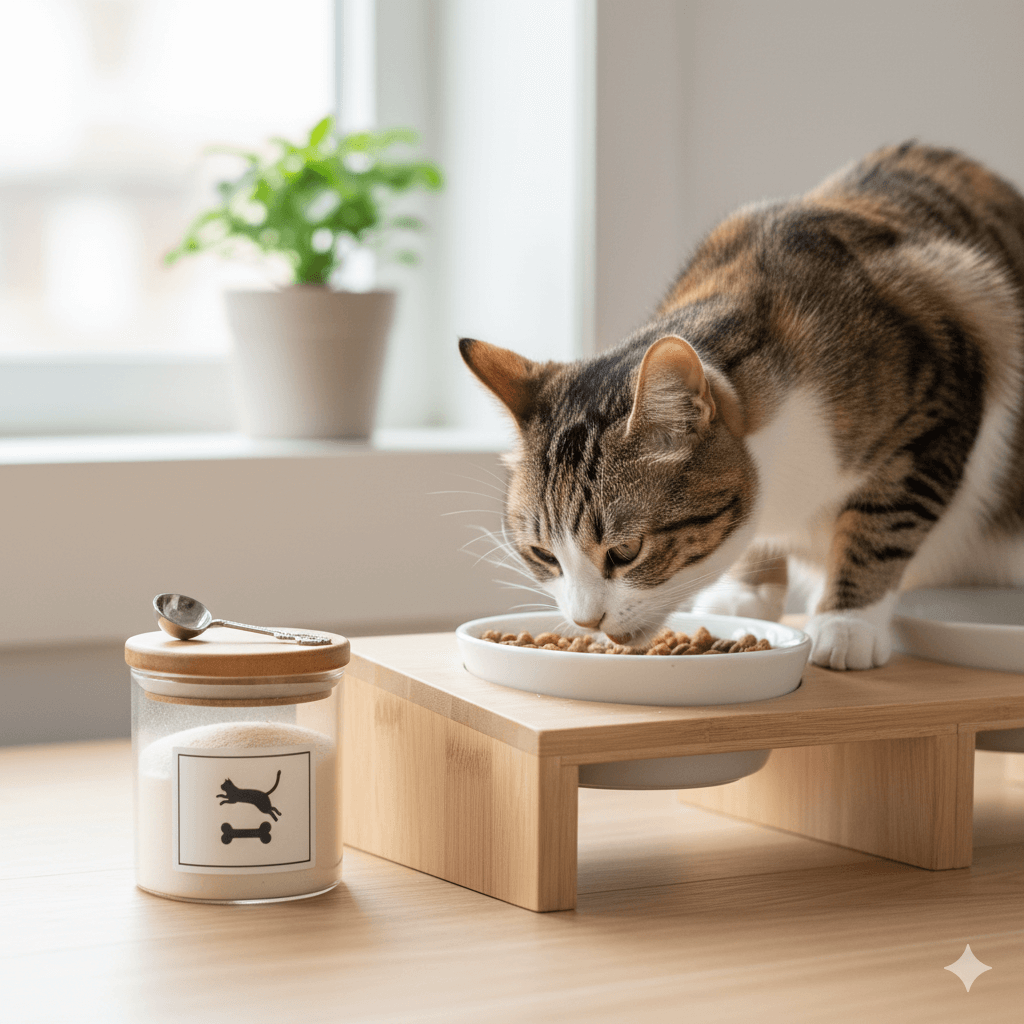Why is My Cat Scratching the Wall? Unraveling the Mystery
If you’ve ever caught your feline friend scratching at the wall, you might have found yourself puzzled. Cats are known for their quirky behaviors, but this one seems particularly odd. Is it boredom, curiosity, or something more serious? Understanding why your cat engages in this behavior can help you address any underlying issues while strengthening your bond with your furry companion. In this blog post, we’ll explore the reasons behind this peculiar habit and provide practical solutions to ensure both you and your cat stay happy.
Possible Reasons Why Your Cat is Scratching the Wall
Cats scratch surfaces for various reasons, and understanding these motivations is key to addressing the issue effectively. Below are some common explanations for why your cat might be targeting your walls:
Territorial Marking:
Cats have scent glands in their paws, and scratching helps them leave a territorial mark. Even indoor cats may feel the need to claim their space.Boredom or Excess Energy:
Without enough mental stimulation or physical activity, cats may resort to unusual behaviors like wall scratching as a way to entertain themselves.Curiosity About Sounds or Smells:
If your walls have small cracks or emit faint sounds (like pipes running), your cat might be investigating what’s behind them.Stress or Anxiety:
Changes in the household, such as new pets or moving furniture, can trigger stress-related behaviors in cats, including excessive scratching.Health Issues:
Sometimes, compulsive scratching can indicate underlying health problems like allergies, skin irritation, or neurological conditions.
Understanding these potential triggers will guide you in determining whether your cat’s behavior is harmless or requires further attention from a veterinarian.
How to Address Wall Scratching Behavior
Once you’ve identified possible reasons for your cat’s wall-scratching habit, it’s time to take action. Here are some steps you can follow to redirect or minimize this behavior:
Provide Alternative Outlets:
Offer scratching posts or pads near the areas where your cat tends to scratch the most. This gives them an appropriate place to fulfill their natural instincts.Enrich Their Environment:
Add interactive toys, puzzle feeders, or climbing structures to keep your cat mentally engaged throughout the day.Check for Pests or Noises:
Inspect your walls for signs of pests or unusual sounds that might attract your cat’s interest. Fixing these issues could eliminate the behavior entirely.Consult a Veterinarian:
If the scratching persists despite your efforts, schedule a vet visit to rule out medical causes like allergies or parasites.Use Positive Reinforcement:
Reward your cat with treats or praise when they use designated scratching areas instead of the wall. This encourages good habits over time.
By implementing these strategies, you can create a supportive environment that discourages unwanted behaviors while promoting your cat’s overall well-being.
Check this guide 👉Top 5 Best Cat Scratcher Cardboards for Happy Cats!
Check this guide 👉Top 5 Ultimate Cat Scratching Posts for Pure Feline Joy!
Check this guide 👉Why Do Cats Scratch Around Their Food? Best 7 Behavior Tips!

Reasons for Scratching | Solutions to Try |
|---|---|
Territorial marking | Provide scratching posts or pads |
Boredom or excess energy | Introduce interactive toys or puzzles |
Curiosity about sounds or smells | Inspect walls for pests or noises |
Stress or anxiety | Maintain a stable routine and safe space |
Underlying health issues | Schedule a check-up with a veterinarian |
Preventing Future Wall Scratching Incidents
Prevention is always better than cure. By taking proactive measures, you can reduce the likelihood of your cat returning to its wall-scratching habit. Consider the following tips:
Regular Playtime Sessions:
Engage your cat in daily play sessions using wand toys or laser pointers. Physical activity helps burn off excess energy that might otherwise lead to destructive behaviors.Rotate Toys Frequently:
Keep your cat entertained by rotating their toys every few days. Novelty keeps them interested and less likely to seek entertainment elsewhere.Create a Safe Space:
Designate a cozy corner with soft bedding, hiding spots, and calming scents to give your cat a retreat during stressful times.Maintain Consistency:
Avoid sudden changes in your cat’s environment, such as rearranging furniture or introducing new pets abruptly. Stability reduces anxiety-related behaviors.Monitor Behavior Closely:
Pay attention to patterns in your cat’s scratching behavior. Early detection of triggers allows you to intervene before the habit becomes ingrained.
With consistent effort and care, you can prevent future incidents and foster a harmonious living environment for both you and your pet.
Common Misconceptions About Cat Scratching
There are several myths surrounding why cats scratch surfaces like walls. Clearing up these misconceptions can help you approach the issue with greater clarity:
Myth: Cats Scratch Out of Spite:
Contrary to popular belief, cats don’t scratch to upset their owners. Instead, it’s usually driven by instinct or external factors.Myth: Declawing Solves the Problem:
Declawing is not only unethical but also harmful to cats. It doesn’t address the root cause of scratching behavior and can lead to long-term pain.Myth: Only Outdoor Cats Scratch Walls:
Indoor cats are just as likely to scratch walls due to boredom, curiosity, or territorial instincts.Myth: Punishment Works:
Scolding or punishing your cat for scratching is ineffective and can damage your relationship. Positive reinforcement yields better results.Myth: Scratching is Always Harmless:
While occasional scratching may be normal, persistent behavior could signal underlying issues that require professional intervention.
Dispelling these myths ensures you adopt humane and effective methods to manage your cat’s behavior.
Environmental Factors That Trigger Wall Scratching
Your cat’s environment plays a significant role in shaping their behavior, including wall scratching. Certain environmental factors can either encourage or discourage this habit. Here are some elements to consider:
Lack of Vertical Space:
Cats love exploring vertical areas. If your home lacks climbing structures or elevated perches, your cat may turn to walls as an alternative.Overstimulating Noises:
Loud or unusual sounds in the house, such as plumbing vibrations or outdoor activity near walls, can pique your cat’s interest and lead to scratching.Unappealing Scratch Surfaces:
If your cat dislikes the texture or placement of their scratching post, they might opt for surfaces like walls instead.Changes in Routine:
Moving furniture, remodeling, or altering daily schedules can confuse your cat and trigger stress-related behaviors like wall scratching.Presence of Other Pets:
Multi-pet households can create competition for resources or territory, prompting cats to mark walls more frequently.
By addressing these environmental triggers, you can create a calm and enriching space that minimizes the likelihood of wall scratching.
Signs Your Cat’s Scratching is Stress-Related
Sometimes, wall scratching is more than just a curious habit—it could be a sign of stress or anxiety. Identifying stress-related behaviors early can help you intervene effectively. Look out for these signs:
Increased Hiding:
If your cat starts spending more time hiding under furniture or in secluded spots, it could indicate they’re feeling overwhelmed.Changes in Appetite:
A sudden decrease or increase in eating habits often accompanies stress and may coincide with unusual behaviors like wall scratching.Excessive Grooming:
Over-grooming, especially to the point of hair loss, is a common symptom of feline anxiety that might accompany compulsive scratching.Aggression Toward People or Pets:
Stress can make cats more irritable, leading to uncharacteristic aggression toward household members.Vocalization Changes:
Increased meowing, growling, or other vocalizations might signal discomfort or unease in your cat’s environment.
If you notice multiple stress-related signs alongside wall scratching, take steps to reduce stressors and consult a professional if needed.
Fun Ways to Redirect Your Cat’s Energy
Redirecting your cat’s energy toward positive activities can significantly reduce unwanted behaviors like wall scratching. Engaging them in fun and stimulating exercises helps fulfill their natural instincts while keeping them entertained. Try these ideas:
Interactive Laser Toys:
Laser pointers are excellent for encouraging physical activity and satisfying your cat’s hunting instincts without damaging walls.Food Puzzle Toys:
These toys challenge your cat mentally and physically by requiring them to work for treats or kibble, keeping them occupied for longer periods.Cat Trees and Shelves:
Installing vertical spaces like cat trees or wall shelves provides an outlet for climbing and scratching in designated areas.DIY Obstacle Courses:
Create a simple obstacle course using boxes, tunnels, and soft objects to spark your cat’s curiosity and keep them active.Window Perches for Bird Watching:
Placing a perch near a window allows your cat to observe birds and outdoor activity, which can distract them from destructive behaviors.
By incorporating these fun activities into your cat’s routine, you’ll not only curb wall scratching but also enhance their overall quality of life.
Frequently Asked Questions About Cat Wall Scratching
Why does my cat scratch the wall specifically?
Your cat may be attracted to the texture, smell, or sound coming from the wall, or they may simply be expressing territorial instincts.
Should I worry if my cat suddenly starts scratching walls?
Sudden changes in behavior warrant observation. If accompanied by other symptoms like lethargy or appetite loss, consult a vet.
Can I train my cat to stop scratching walls?
Yes, through positive reinforcement, environmental enrichment, and providing alternative outlets.
Is wall scratching a sign of illness?
Not always, but persistent or obsessive scratching could indicate health issues that need veterinary attention.
What should I avoid doing when my cat scratches walls?
Avoid yelling, hitting, or punishing your cat, as this can increase stress and worsen the behavior.
Creating Harmony Between You and Your Feline Friend
Understanding why your cat scratches the wall is the first step toward resolving the issue. Whether it’s boredom, curiosity, or an underlying health concern, addressing the root cause ensures a happier home for everyone involved. By enriching your cat’s environment, offering alternatives, and staying vigilant for signs of trouble, you can nurture a strong bond built on trust and mutual respect. Remember, patience and empathy go a long way in managing even the quirkiest feline behaviors.
Understanding Bone Supplement for Cats: Best 7 Expert Tips! – Safe, vet-approved guidance for strong feline bones & balanced nutrition.
Bone Supplement for Dogs: Best 7 Expert Tips! – Expert guide to calcium, collagen & bone health for every life stage.
Understanding Can Cats Get Sunburn: Best 7 Expert Tips! – Protect your feline from UV damage with vet-backed prevention strategies.
How to Train a Seizure Alert Dog: Best 7 Expert Tips! – Learn expert-backed steps to nurture natural instincts into reliable, life-saving seizure alerts.





